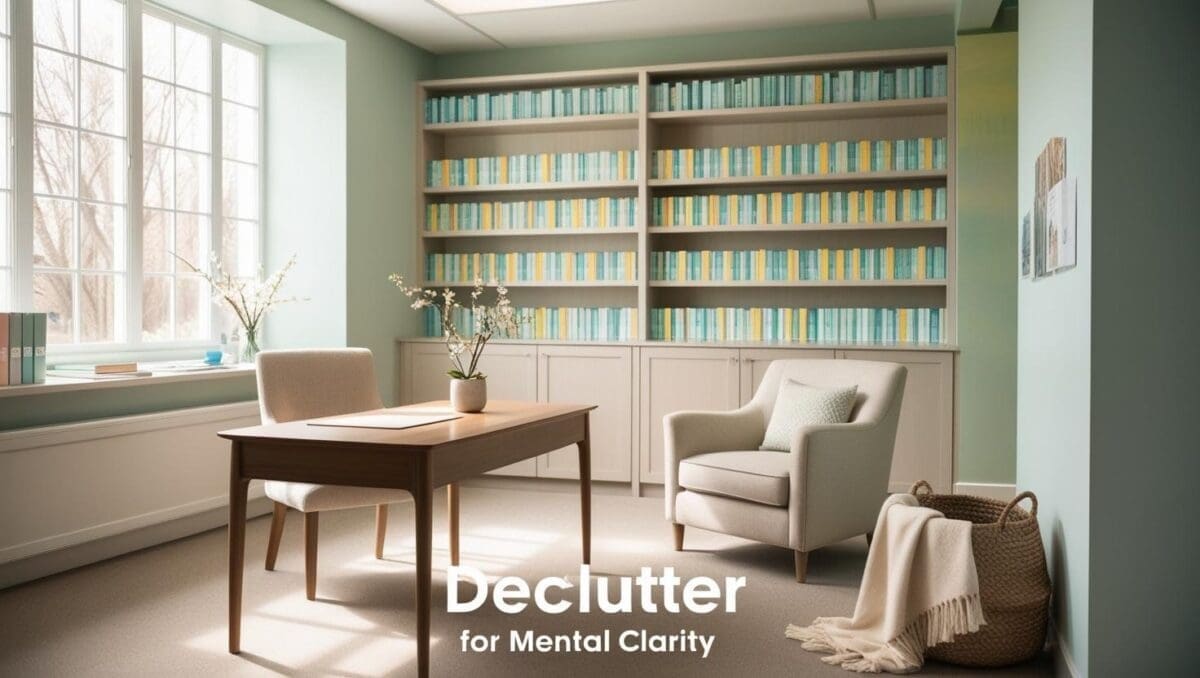What you wear as a therapist may not be everything—but it does speak, even before you do.
The moment a client steps into the room (or sees you on screen), their brain begins scanning for cues: Is this space safe? Is this person trustworthy? Are they competent? Do I feel welcome here? While your tone, posture, and setting play a role, your clothing is one of the first signals they read.
This isn’t about looking “on trend” or dressing to impress—it’s about dressing intentionally to support your therapeutic presence. Let’s explore how clothing affects client perception, how style choices impact emotional safety, and what the research says about color, texture, and the messages we send—without saying a word.
1. The Power of First Impressions in Therapy
Clients form a first impression within milliseconds—and clothing plays a large role in how warmth, credibility, and professionalism are perceived.
In fact, a 2012 study published in the Journal of Fashion Marketing and Management found that clothing style directly impacts perceived intelligence, trustworthiness, and confidence【source: Howlett et al., 2012】. Another study in Psychological Reports found that therapist attire influences clients’ feelings of comfort and willingness to self-disclose【source: Gutheil & Gabbard, 1993】.
In therapy, where emotional attunement is critical, this impression sets the tone. A tailored blazer may communicate competence and stability, while soft knits or cardigans signal approachability and calm. The goal isn’t to impress—it’s to help your client feel safe and understood.
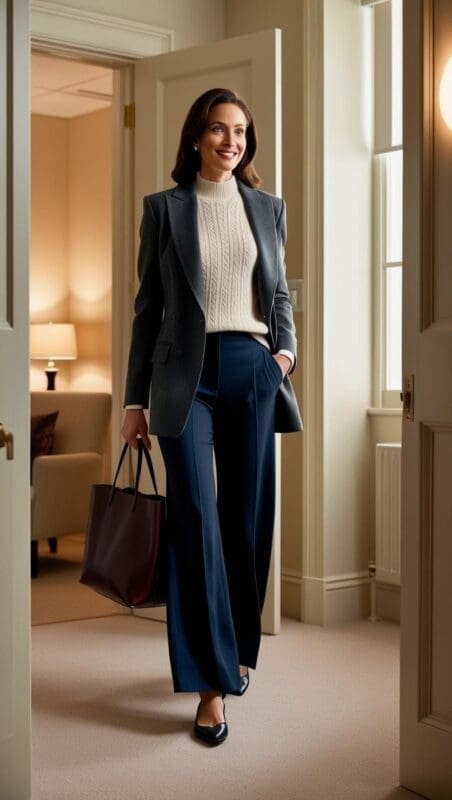
2. Color Psychology in Therapist Outfits
Color affects both mood and perception. And in therapeutic settings, it can either enhance the sense of emotional safety—or inadvertently stimulate discomfort.
Here’s how clients may perceive common colors, according to research and color psychology literature:
- Blue – Trust, calm, reliability
→ Frequently recommended in therapy rooms and clothing for creating emotional safety
→ “Blue is calming. It conveys trust and confidence.” — The Psychology of Color in Marketing and Branding (Satyendra Singh, 2006) - Green – Harmony, growth, healing
→ Especially comforting in trauma-informed or nature-based settings - Earth Tones / Neutrals – Grounding, safe, non-distracting
→ Beige, taupe, cream, and soft browns help regulate client arousal levels
→ Often used in mindfulness and minimalism aesthetics - Black or Dark Gray – Authority, seriousness
→ May be interpreted as “formal” or “intimidating” depending on the client’s history and therapy context - Bright Colors (Red, Orange) – Energetic, but overstimulating
→ Best used in accents (like accessories or nail color) rather than main pieces, especially in trauma-sensitive work
The key is to align your colors with your therapeutic intention. A relational, attachment-focused therapist might lean into warm neutrals and soft greens, while a CBT or medical-based psychologist might prefer more structured grays and blues.
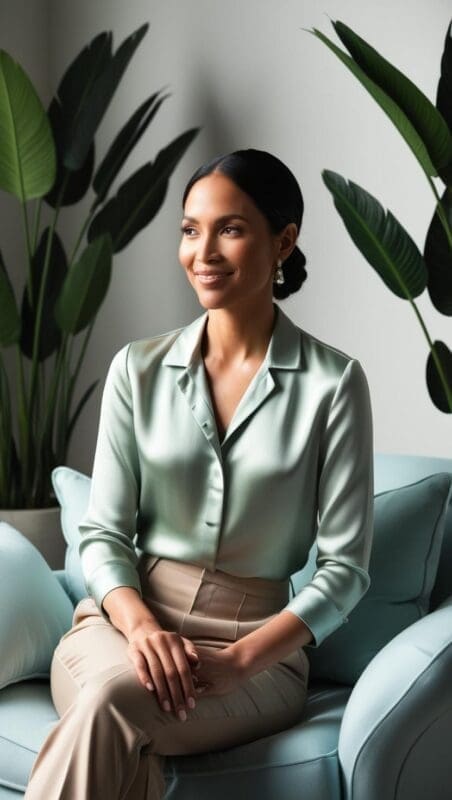
3. Structure vs. Softness: What Silhouettes Communicate
Your outfit’s silhouette—the structure, shape, and flow—also communicates.
- Structured pieces (like blazers, collared shirts, tailored pants) send a message of clarity, direction, and boundary
- Soft pieces (like cardigans, relaxed trousers, midi dresses) convey nurturing, warmth, and flexibility
The best therapist outfits often blend both—a soft blouse under a structured jacket, or wide-leg trousers with a tucked-in, clean-lined knit top. This visually reflects the therapeutic balance of holding space while offering containment.
In child or trauma-informed therapy, softness and approachability often take priority. In high-stakes or clinical environments, structure can provide necessary authority and grounding.
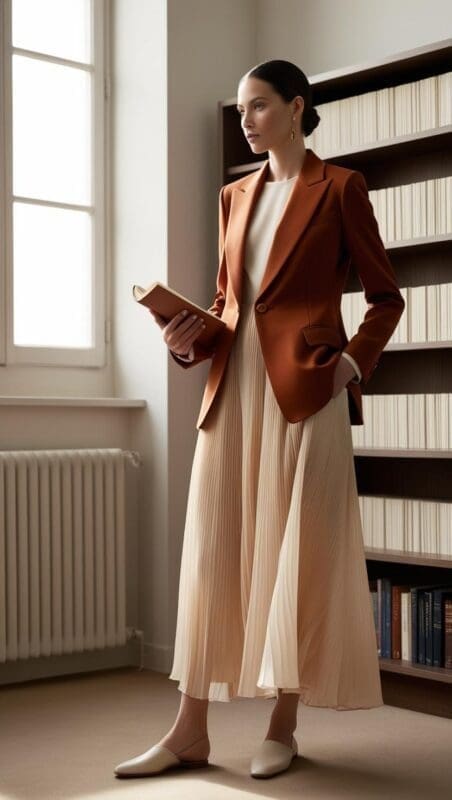
4. Texture, Fabric, and Feeling Safe
While often overlooked, fabric texture has subtle psychological effects—especially for sensory-sensitive clients (such as those with autism, trauma history, or ADHD).
- Natural fibers (cotton, linen, soft wool) feel breathable and authentic
- Matte textures are easier on the eyes than shiny or synthetic materials
- Layering with tactile fabrics can subtly soothe clients in emotionally intense moments
Research in design psychology supports the idea that touchable textures increase feelings of safety and warmth, while slick or cold materials (e.g., polyester, stiff synthetics) can create subtle emotional distance【source: Designing for the Senses, D. Augustin, 2009】.
For therapists, cozy doesn’t mean casual—it means regulating.
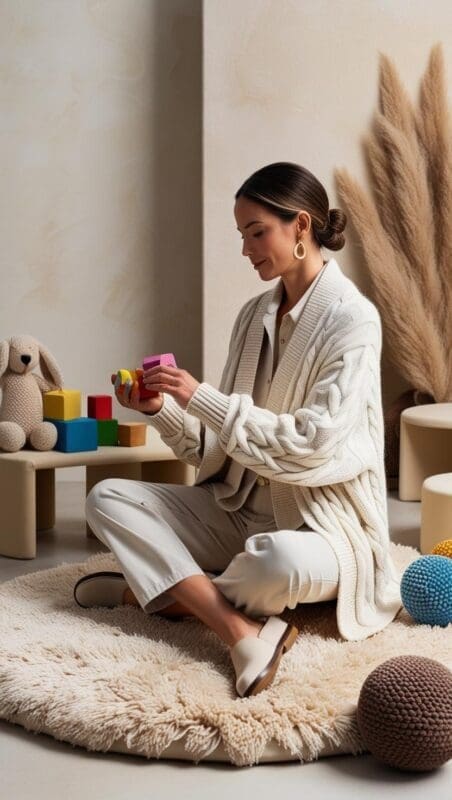
5. Footwear, Jewelry & Accessories: The Details That Speak Volumes
Small styling choices often have the biggest emotional impact.
- Shoes: Flat, quiet shoes signal groundedness. Heels or boots may come across as assertive or stylish—consider your setting and population.
- Jewelry: Minimalist pieces are ideal, but symbolic jewelry (like crystals, spiritual charms, or meaningful tokens) can open gentle connection when appropriate
- Hair & Makeup: Natural styling is often preferred in clinical settings—but a pop of lip color or earrings can make you feel more “yourself,” which clients pick up on, too
Cultural sensitivity also matters. In some communities, color and accessory choices can be misread—so always be aware of the norms and values of the clients you serve.
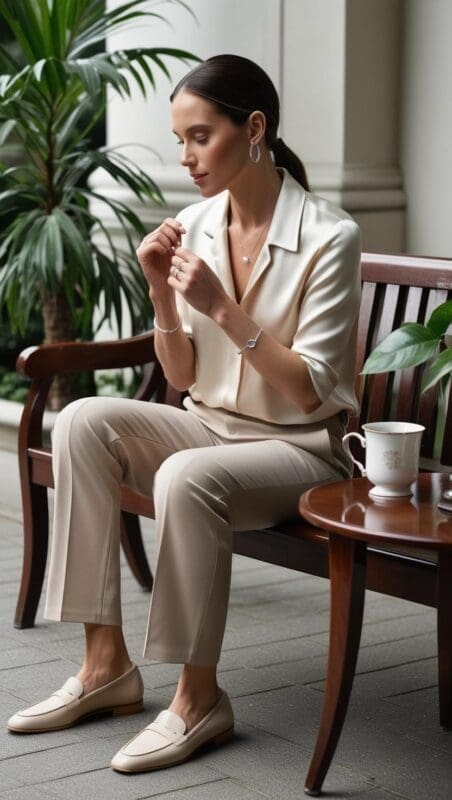
6. Online Therapy & Camera-Friendly Outfits
Teletherapy requires a slightly different approach. Your outfit is now framed by the screen, and camera lighting can affect color and clarity.
Tips for Zoom-friendly therapist outfits:
- Stick to solids in muted or medium tones (avoid white or busy prints)
- Avoid loud jewelry or glasses that reflect too much light
- Align your outfit with your background—contrast helps you pop without distraction
Bonus tip: soft shoulder detailing or layered necklines add dimension on screen without being “too much.”

7. Dressing Intentionally: Match Your Modality and Mood
Your therapeutic modality and setting can guide your style:
- Child therapy or play-based work: soft knits, approachable prints, calm sneakers
- CBT or short-term counseling: clean-cut separates, blues and grays, structured lines
- Relational or trauma-informed work: earthy tones, breathable layers, soft silhouettes
- Medical or clinical hospital: darker colors, high-function tailoring, formal footwear
You can also dress to support your own emotional state—using color and comfort to co-regulate with clients. For instance, on a day when you’re tired or holding space for grief, a soft blush or sage green sweater may ease tension—for both of you.
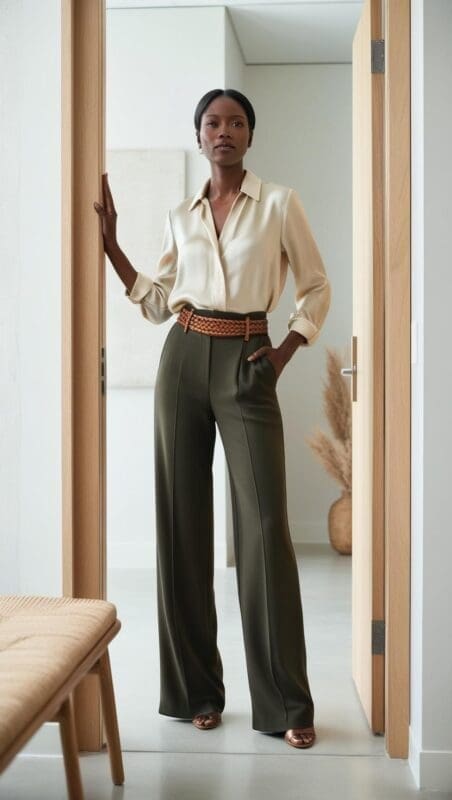
Your Clothes Are Holding Space Too
Therapist clothing is more than “professional appearance.” It’s a tool. A subtle visual cue that reflects your presence, your safety, and your support.
You don’t need to dress up—you need to dress aligned.
Clothing can quietly affirm:
You’re safe here. You’re seen. I’ve got you.
So next time you open your closet, ask yourself not just: “What looks professional?”
Ask: “What helps me hold space today?”
📚 Cited Research & Trusted Resources:
- Howlett, N., Pine, K., Cahill, N., Orakçıoğlu, İ., & Fletcher, B. (2013). Unbuttoned: The interaction between provocativeness of female work attire and occupational status. Journal of Fashion Marketing and Management.
- Singh, S. (2006). Impact of color on marketing. Management Decision.
- Gutheil, T. G., & Gabbard, G. O. (1993). The concept of boundaries in clinical practice: Theoretical and risk-management dimensions. American Journal of Psychiatry.
- Augustin, S. (2009). Designing for the Senses: Environmental Psychology and Interior Design.
- Psychology Today articles on color perception and trust signals in clothing
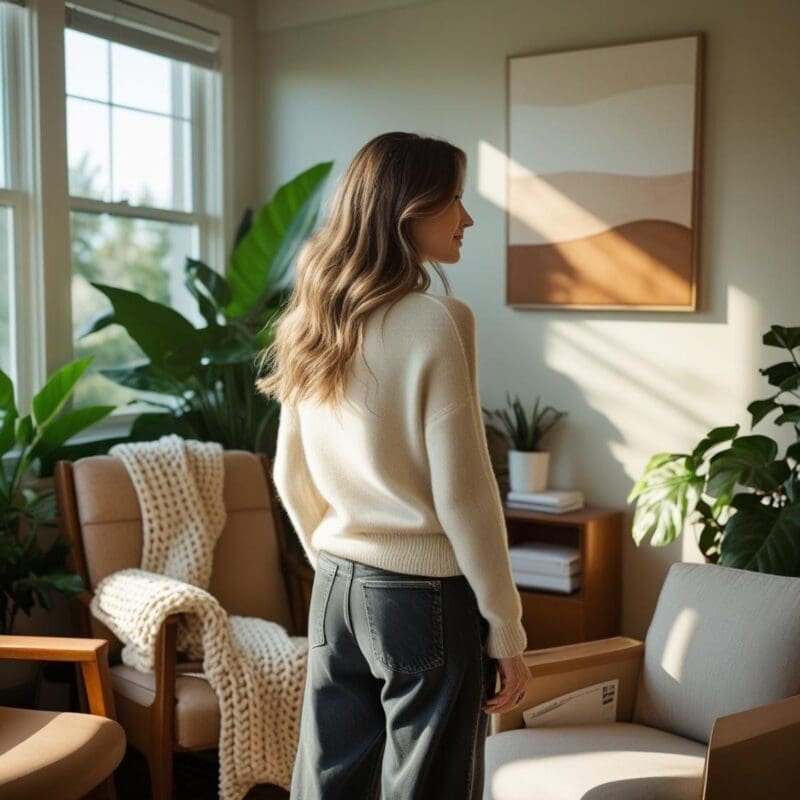
About the Author
Hi, I’m Eve, a former school counselor with a master’s degree in School Psychology and a passionate advocate for children and families navigating sensory challenges. As a mom of children with sensory sensitivities, I deeply understand the journey special-needs parents face, and I dedicate myself to researching and sharing practical solutions to help children thrive and feel comfortable in their bodies. My goal is also to empower counselors, therapists, and psychologists with creative strategies and supportive resources to enrich their everyday practice. When I’m not writing or exploring new therapeutic approaches, you’ll find me spending quality time with my family and continually seeking inspiration from everyday moments.

